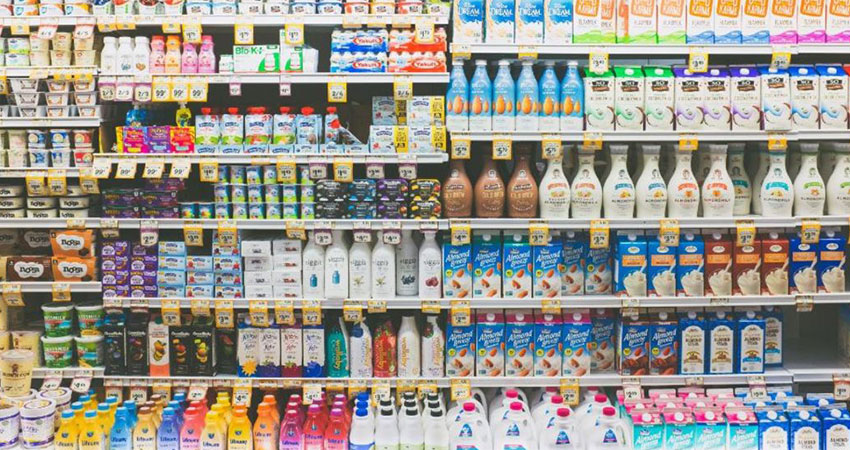For CPGs (consumer products goods companies), it’s no longer a matter of if but when the circular economy will supplant the traditional linear take-make-use-dispose model of consumption. And for some of the biggest players in that space, the “when” already has arrived.
Unilever, for example, is incorporating a reuse approach within 55 of its product lines, including “buy once, refill for life” stainless steel cases for Dove deodorant and refillable spray bottles for Lifebuoy antibacterial spray. The company has launched pilot projects in 11 countries to make products available through supermarket-based refill stations. On the packaging side, compostable “mushroom plastic” made by New York-based Ecovative from agricultural byproducts protects fragile products in transit, and can be composted and returned to the soil after use.
Initiatives like these are feeding an emerging circular system where economic activity is decoupling from consumption of finite resources, and where products, components and materials hold their value as they are recycled, repurposed, reclaimed and kept in use. As a result, the business case for CPGs seriously engaging in the circular economy is growing more compelling, especially given the broader regulatory context, with new extended producer responsibility (EPR) packaging regulations and plastic taxes, among others.
Accenture recently asserted that circular strategies could generate an additional $35 billion of value for the consumer products industry by 2030. “And over and above that figure is the potential growth by Gen Y and Z consumers coming to the peak of their spending power and purchasing sustainability-focused brands,” it notes.
In the world of consumer products, the race to tap these emerging sources of value and capitalize on the circular economy is well underway. The edge likely will go to companies that mobilize to take the following seven steps:
Behave as a Regenerative Business
Carbon reduction and net-zero goals are important. Still, the endgame is not just to do “less bad” but to focus on positive climate impact through their actions. This means rethinking how and where they source materials for products and packaging, based not only on circular priorities but also ethical and societal considerations. It could also mean investing in initiatives like reforestation and wetlands restoration that focus on regenerating natural ecosystems.
Commit to Making An Impact
Driven by a realization that their competitive future may well depend on gaining an early foothold in the circular economy, producers are mobilizing alongside other private and public entities to grow a circular economy around plastics and other materials. The Ellen MacArthur Foundation, a global catalyst for circular initiatives and thinking, has gathered commitments from more than 500 signatories, among them companies representing 20% of all plastic packaging produced globally, including L’Oréal, MARS, Nestlé and Walmart. Hundreds of companies also are backing country- and region-specific circular commitments via so-called “plastic pacts” in the U.S., Europe, Africa, South America and Australasia.
Embed Circularity KPIs in All Core Processes
“Recycling isn’t something we think about after we create a new product — it’s something we embed from the outset,” says Nestlé. For a wide range of CPGs, this kind of circular mindset extends to activities well beyond recycling. Having various efficiency, waste and circularity-related KPIs integrated into end-to-end processes and decision making, with the ability to centrally monitor, manage, and optimize business and operational processes around them, helps a company identify the most efficient pathways for making its operations and its products more circular.
Design for Circularity
The fact that only about 8.6% of all materials we extract and use end up being recycled is largely the result of designing waste into products and packaging. Now, however, more CPGs are shifting their mindset to treat waste as a design flaw, and are designing for circularity. They’re using advanced modeling and analytics in engineering and design to illuminate pathways for creating circular products, components and materials that emphasize regeneration, waste elimination and keeping materials in use longer. In essence, they’re designing for modularity, extended life, repurposing, recycling and/or reuse.
Track/Trace Internally, Across the Supply Chain
With momentum building for carbon tariffs, EPR requirements and even a global United Nations treaty on plastic pollution, companies must be able to track, analyze and report on the make-up and the origin of the materials and components they use and the products they make. This includes providing clear visibility into resources consumed and emissions produced in making them, and extends beyond the walls to the supply chain. Unilever, for example, is using a blockchain solution to increase traceability and transparency in its palm oil supply chain, so it can tell what percentage of palm oil products were purchased from a sustainable source and track it to the end consumer product.
Manage a Complex Regulatory Landscape
As fast as EPR, carbon taxation and other policies and regulations are changing around the world, companies must be able to not only understand which rules apply to them and meet compliance responsibilities, but also loop those insights through development to inform product and packaging design choices.
Collaborate Within Business Ecosystems
Because circular business initiatives tend to involve multiple stakeholders from disparate industries, connectedness, communication and collaboration are key to making them work. Being connected digitally as part of a business ecosystem enables companies to think about the data and insights they need to share for reporting and disclosure. They can also jointly explore and develop new circular business opportunities that involve sharing risk and reward.
The wheels of the circular economy are already turning. By focusing on these seven action steps, CPGs can jump onboard early enough to take advantage of the opportunities that shifting buyer preferences and regulatory policies are creating. In so doing, they become the kind of sustainable, regenerative business and brand that consumers increasingly favor.
Natasha Pergl is Sustainability and Circular Economy lead for Consumer Products at SAP

